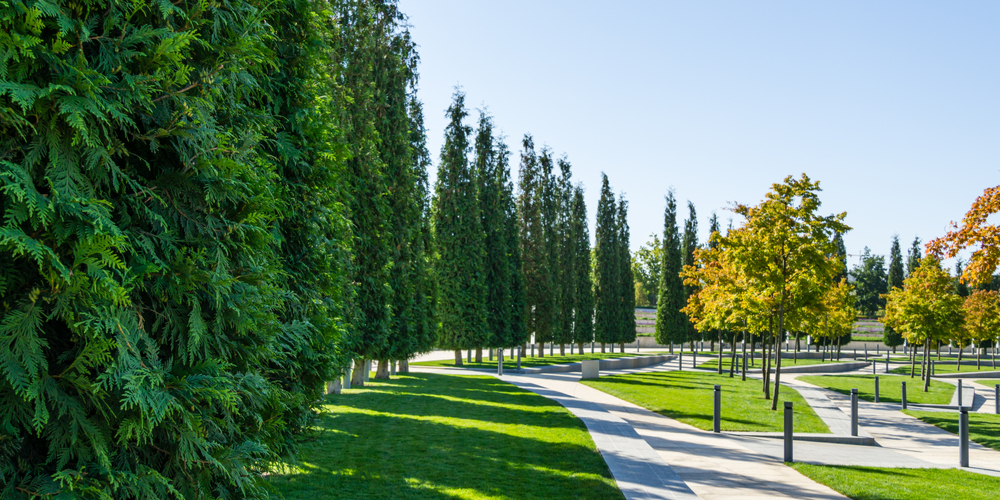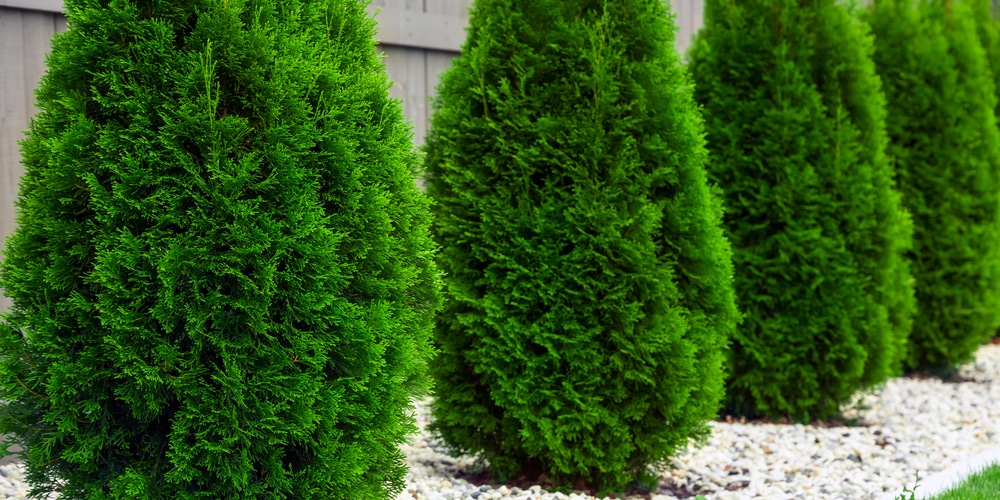The Arborvitae species make for excellent hedge and privacy screens and for beautifying the landscape. It’s a popular tree from the North and highly adapted to cold conditions.
If you live somewhere warmer, you might ask, ‘does arborvitae grow in Texas?’ The good news is that it’s tough enough to withstand zone 9 summers and hot days. Some Arborvitae species are more heat-tolerant than the others, including the Thuja Green Giant.
Can You Grow Arborvitae in Texas?

Arborvitae trees are vigorous growers and belong to the evergreen crowd, which means they tend to stay lush and come back each year. In terms of care they are beginner-friendly as these trees can usually survive a missed watering or two.
Arborvitae is hardy in USDA zones 2 to 8. However, it’s not uncommon to see them in zone 9 regions such as Texas. As far as options are concerned you can pick from five species, with Giant arborvitae and American arborvitae being the most common and popular among them.

Some of the recommended arborvitae varieties you can grow in Texas include T. plicata ‘Fluffy’, T. occidenalis ‘Golden Globe’ and Thuja ‘Green Giant’. However, you will need to take into account what you intend to use them for and just how much space you have to accommodate them into your landscape.
When to Plant Arborvitae in Texas
Arborvitae tree planting in the state of Texas can be done any time, but it’s recommended that you put them in the ground during fall to reduce transplant shock and stress. The cooler temperatures allow the tree to settle in nicely, and the rain sets a precedent for strong roots.
Your arborvitae should receive at least 6 hours of direct sunlight, or else it will have sparse branches and foliage. They’re not too picky when it comes to the type of soil, but they will appreciate it if you put them in a well-draining medium and a portion of mulch or similar organic material.
It’s best to plant arborvitae where they can get enough space to grow to their full size. If you’re planning to form a fence or hedge, space your tree saplings 4 feet apart from each other and in a slight zig-zag pattern to make it appear more natural.
You should plant it as soon as it arrives so the roots won’t dry out. Dig a hole that’s roughly twice or thrice the size of the sapling’s root ball, then put it a bit higher than ground level. Fill the space with organic material and topsoil and water deeply to settle it in.
How to Care for Arborvitae
There are two important things to keep in mind when planting and growing arborvitae- space and enough sunlight. Once you meet the basic requirements you can look forward to your tree growing lush and healthy in just a few short years.
Newly-planted shrubs should be given adequate watering during its growing season. The soil should stay moist but not visibly wet. Then, slowly ease off when the roots are established and the tree grows quickly on its own. Evergreens still need water during winter, but don’t put in too much as they’re still in a semi-dormant state.
It’s easy to check for over or underwatering in an arborvitae. When the needles drop and the leaves start turning yellow or brown then it’s probably thirsty. At the same time, you should stop feeding it when the leaves are discolored and when there’s root rot.
Arborvitae typically won’t have any problems with pests or diseases. However, they may be susceptible to fungal issues caused by poor air circulation. To counter this, you can remove branches and stems to create good airflow and treat the affected tree with the appropriate fungicide.
This tree species tends to retain its shape, which means you won’t have to prune as much to make them look neat and tidy. You can shape them into topiaries and hedges as desired, but it should only be done once per growing season.
Does Arborvitae Grow In Texas: Final thoughts
Regular maintenance of an arborvitae includes removing dead leaves and branches, but not to the point where you get into bare wood. You can thin them to reduce overall height via strategic cuts to make them appear smaller, but once you remove the top they won’t likely grow back.
Related Article: Japanese Maple Texas: Growth and Care Guide
